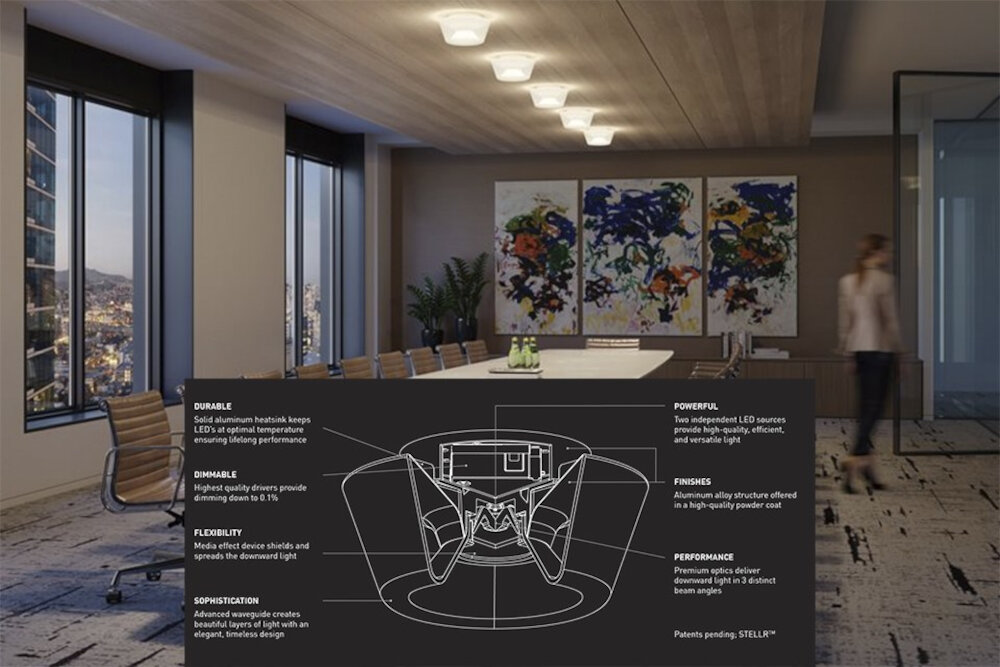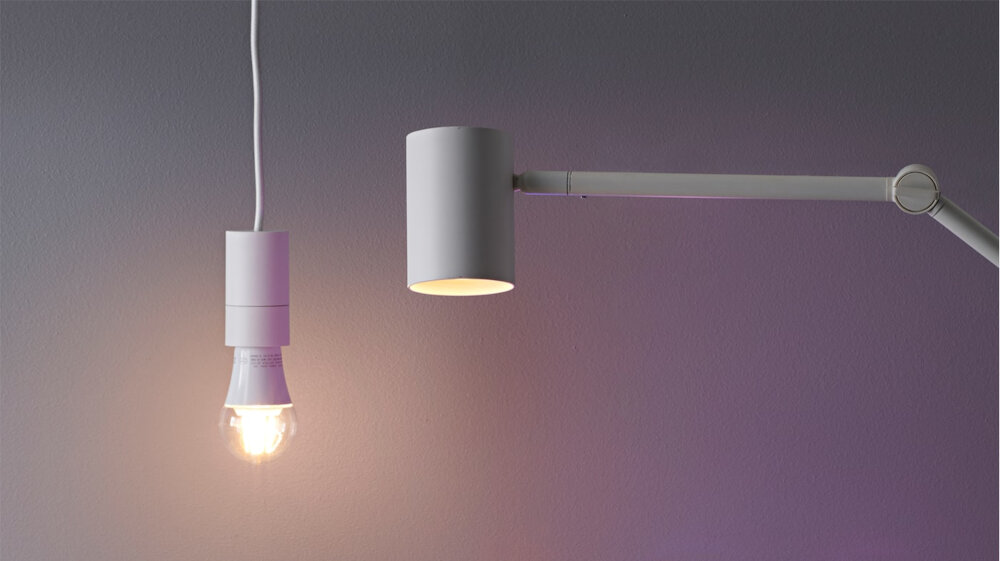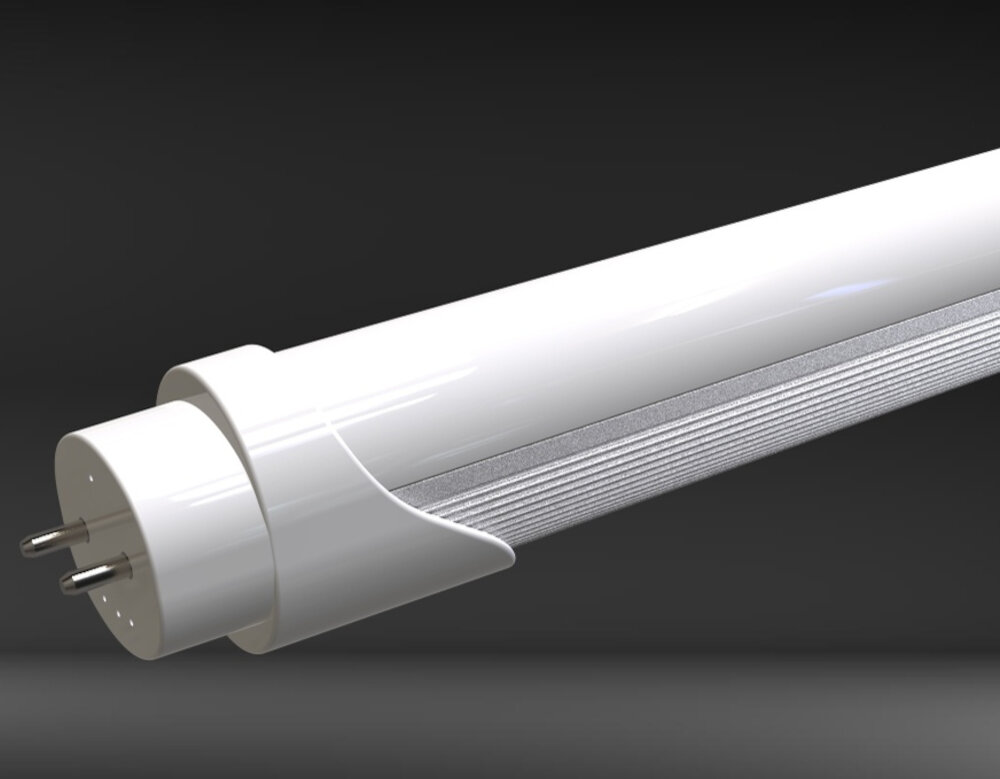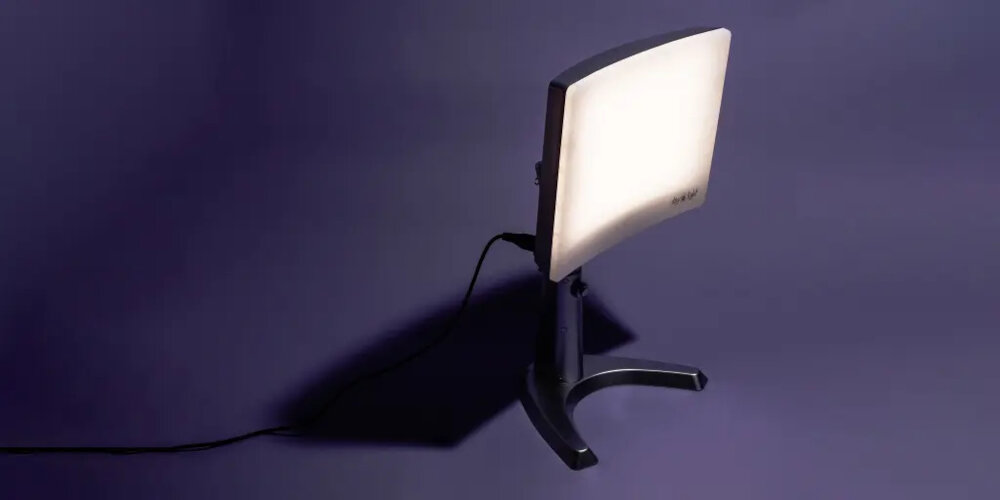Troubleshooting Tips: LED Light Flashing When Off How to Fix It

When it comes to LED lights, they are known for their energy efficiency and durability, making them a popular choice for lighting solutions. However, despite their reliability, it’s not uncommon for LED lights to malfunction and leave you scratching your head. One of the most frustrating issues is when your LED light flashes when it’s supposed to be off. This can be a significant inconvenience, especially if you’re trying to sleep or relax in a dark environment. Fortunately, there are troubleshooting tips you can follow to fix this problem and get your LED lights back to working correctly. The first thing to keep in mind when dealing with flashing LED lights is that it’s usually a sign of an electrical issue. It could be a wiring problem, a faulty switch, or a power surge that’s causing the light to flicker. While this might sound daunting, it’s important not to panic and take a systematic approach to troubleshooting the problem. By following some simple steps and using some basic tools, you should be able to identify and fix the issue quickly and easily.
LED light technology, or Light Emitting Diode, is a type of lighting that utilizes a semiconductor to produce light. Unlike traditional incandescent bulbs, LEDs do not rely on a filament to generate light, but instead rely on a diode that emits photons when a current flows through it. This results in a more efficient and long-lasting light source that consumes less energy and generates less heat. LEDs are commonly used in a wide range of applications, including residential and commercial lighting, automotive lighting, and electronic displays. Despite their benefits, LED lights can sometimes experience issues such as flashing when turned off, which can be caused by a variety of factors including faulty wiring, incompatible dimmer switches, or power surges.
Addressing the issue of LED light flashing when off is crucial as it can lead to several problems. Firstly, it can cause disturbance and annoyance to anyone nearby due to the constant flickering of the light. Secondly, it can result in increased energy consumption and higher electricity bills. Additionally, it can affect the lifespan of the LED bulb, resulting in more frequent replacements. Furthermore, if left unaddressed, it could potentially be a fire hazard. Hence, taking the necessary steps to fix the issue promptly can not only save money and energy but also ensure the safety and well-being of everyone in the vicinity.
Possible Causes

If you are experiencing the issue of LED light flashing when off, it is likely caused by a few different factors. One of the most common causes is the presence of residual electrical charges in the circuit. When electrical charges remain in the circuit, they can cause the LED light to continue flashing, even when it is supposed to be off. Another possible cause of this issue is a malfunctioning switch. If the switch is not functioning properly, it can cause the LED light to turn on and off intermittently, even when you are not actively using it. Another possible cause of LED light flashing when off is a faulty power supply. If the power supply is damaged or malfunctioning, it can cause the LED light to turn on and off randomly. Additionally, the presence of electromagnetic interference in the surrounding environment can cause the LED light to flicker or flash when it is off. This type of interference can be caused by a variety of factors, including nearby electrical devices or radio waves. In order to determine the cause of your LED light flashing when off, it is important to troubleshoot the issue by checking the circuit, switch, power supply, and surrounding environment.
Power surges or fluctuations can be a common cause of LED lights flashing when they are supposed to be off. These surges occur when there is a sudden increase or decrease in the electrical current flowing through the circuits that power the lights. This can happen due to various reasons, including lightning strikes, faulty wiring, or the operation of heavy machinery nearby. When power surges occur, they can damage the electronic components of the LED bulbs, causing them to malfunction. It is essential to address power surges promptly to prevent further damage and ensure the proper functioning of your LED lights. Installing surge protectors or voltage regulators can help mitigate the effects of power surges and fluctuations, providing a stable and reliable power supply for your LED lights.
Faulty wiring can be a common cause of LED lights flashing when they are supposed to be off. This issue can occur due to poor installation, damaged wires, or wrong connections. It is essential to ensure that the wiring is correctly installed and connected to prevent any potential hazards, such as electrical fires or short circuits. If you suspect faulty wiring, it is recommended to seek the help of a professional electrician to diagnose and fix the issue thoroughly. Ignoring this problem can cause damage to your LED lights, and even more dangerous, it can harm your safety and well-being.
One common reason that can cause LED lights to flash when turned off is a faulty switch or dimmer. A switch or dimmer may become defective over time, causing a disruption in the flow of electrical current. When this happens, a small amount of electrical current may continue to flow through the circuit, causing the LED light to flicker or flash. If you suspect that a faulty switch or dimmer is the cause of your LED light flashing when off, it is recommended to replace the switch or dimmer as soon as possible to prevent any further damage or safety hazards.
If you are experiencing a flashing LED light when it is turned off, one possible culprit could be a faulty LED bulb. LED bulbs are known for their longevity and energy efficiency, but they are not immune to defects. A faulty LED bulb can cause a variety of issues, including flickering or even a flashing light when it is turned off. This could be due to a manufacturing defect, a damaged or broken component, or simply wear and tear over time. If you suspect that the LED bulb is the problem, try replacing it with a new one to see if the issue is resolved.
Interference from other electronic devices is a common issue that can cause LED lights to flash when they are turned off. This interference can be caused by a variety of devices, such as cell phones, radios, or even other LED lights. When these devices emit electromagnetic radiation, it can interfere with the circuitry of the LED light, causing it to turn on and off. To fix this issue, it is important to identify the source of the interference and remove it if possible. Additionally, using high-quality LED lights and ensuring that they are properly installed and grounded can also help to reduce the risk of interference.
Troubleshooting Steps

When troubleshooting LED lights that flash when they’re supposed to be off, there are several steps to follow. The first step is to check the power source. Ensure that the power source is stable and that there’s no fluctuation in the voltage. If the power source is unstable, it can cause the LED light to flicker when it’s supposed to be off. When checking the power source, it’s essential to look at the wiring and connections to ensure that they’re secure and correctly installed. The second step is to check the LED light itself. If the LED light is old, it may be time to replace it. The LED light may also be faulty, which can cause it to flicker when it’s off. In this case, the LED light will need to be replaced. It’s also essential to check the LED light’s setting to ensure that it’s correctly configured. If it’s not, it can cause the LED light to flicker when it’s off. Following these troubleshooting steps can help resolve the issue of LED lights flashing when they’re supposed to be off.
The first step towards troubleshooting LED light flashing when off is to check the wiring. Loose or faulty wiring can cause the LED light to flicker, even when it’s turned off. Ensure that all connections are secure and tight, and there are no loose wires. Examine the wiring for any damage or frayed ends, which can cause a short circuit. Check the wiring connections at the switch, power source, and light fixture. If the wiring is intact and adequately connected, proceed to the next step in the troubleshooting process.
Step 2 in troubleshooting a flashing LED light is to check the switch or dimmer. The switch or dimmer may be faulty or incompatible with the LED light causing it to flicker. To check if the switch is causing the problem, turn off the switch and observe if the light stops flashing. If it does, then the switch or dimmer may need to be replaced with one that is compatible with LED lights. It is important to note that not all switches and dimmers are compatible with LED lights, and using the wrong one may cause the light to flicker or even damage the LED bulb. Therefore, it is essential to check the compatibility of the switch or dimmer with LED lights before installation to avoid any potential problems.
Step 3 in troubleshooting a flashing LED light when it’s turned off involves checking the LED bulb itself. The LED bulb may be malfunctioning or damaged, causing it to flash even when the light switch is turned off. To check the bulb, turn off the power supply to the light fixture and carefully remove the LED bulb. Inspect the bulb for any visible damage, such as cracks or breaks, and replace it if necessary. Additionally, ensure that the bulb is securely screwed into the light fixture and that the connections are not loose. By thoroughly inspecting the LED bulb, you can determine if it’s the cause of the flashing and take the necessary steps to fix it.
Step 4 in troubleshooting a flashing LED light when off is to check for interference. Interference can come from a variety of sources, such as nearby electronic devices, power surges, or faulty wiring. The first step is to unplug all nearby electronic devices to see if the flashing stops. If it doesn’t, then it’s time to check the wiring. Make sure all connections are secure and that the wiring is not damaged or frayed. If everything seems to be in order, then it’s possible that the issue is being caused by a power surge. In this case, it may be necessary to install a surge protector to prevent future issues. By checking for interference, you can identify and eliminate the cause of the flashing LED light and restore normal functionality to your lighting system.
Step 5 of troubleshooting a flashing LED light when off involves resetting the circuit breaker. This is an essential step to take when the problem is caused by an electrical issue. A circuit breaker is designed to protect the electrical system from damage by tripping when there is an overload or short circuit. If the breaker is tripped, it cuts power to the circuit, causing the LED light to turn off or flash when it’s not supposed to. To reset the circuit breaker, locate the breaker box and flip the switch back to the on position. It’s crucial to identify the cause of the circuit overload to avoid future occurrences. If the problem persists even after resetting the breaker, it may be necessary to call an electrician to investigate the issue further.
Additional Tips

If you have tried all the basic troubleshooting tips mentioned in the article and your LED light still continues to flash when it’s off, here are some additional tips to try out. Firstly, check if your LED light is compatible with the dimmer switch you are using. Some LED lights are not compatible with all types of dimmer switches and may cause the LED light to flicker or flash. If this is the case, switch to a dimmer switch that is compatible with your LED light. Secondly, check if there are any loose connections in the wiring of the LED light. Disconnect the LED light from the power source and check all the connections to make sure they are secure. If any connections are loose, tighten them and reconnect the LED light. Another tip to consider is to check if there is any interference from other electronic devices in your home. Some electronic devices, such as TVs or microwaves, can cause interference with LED lights and cause them to flicker or flash. Move any electronic devices away from the LED light or try using a surge protector to minimize interference. Lastly, if all else fails, consider consulting a professional electrician. They will be able to diagnose the issue with your LED light and provide a solution that is safe and effective. With these additional tips, you should be able to fix the flashing LED light and enjoy the benefits of a well-functioning LED light without any interruptions.
Surge protectors are an essential component of any electronic setup as they safeguard against power spikes and voltage surges that could potentially damage electronic devices. These power surges can occur due to thunderstorms, power outages, or even faulty wiring in the electrical grid. By using a surge protector, you can ensure that your electronic devices are protected from these electrical disturbances. It is important to note that surge protectors have a limited lifespan and should be replaced periodically to maintain their effectiveness. Additionally, not all surge protectors are created equal, so it is important to invest in a high-quality surge protector to ensure maximum protection for your electronics.
To avoid LED light flashing when off, it is essential to use high-quality LED bulbs. Low-quality bulbs may have poor circuitry or may be made with inferior materials, which cause them to malfunction. These bulbs are also prone to flickering and emitting uneven light, which can be a source of annoyance for some people. Furthermore, low-quality LED bulbs may not last as long as their high-quality counterparts, which can result in frequent replacements and additional expenses in the long run. Therefore, it is crucial to invest in good quality LED bulbs that offer reliable performance and longevity, and to avoid the temptation to buy cheaper, low-quality alternatives.
If you’re struggling to troubleshoot why your LED light is flashing when off, it may be time to call in a professional electrician. While it’s tempting to try and fix electrical issues on your own, it’s crucial to prioritize safety and ensure that the problem is resolved correctly. A licensed electrician has the expertise and experience to diagnose and fix any underlying issues that may be causing the flashing. They can also provide advice on how to prevent future electrical problems and ensure that your home is safe and up to code. Hiring a professional can save you time, money, and stress in the long run, so don’t hesitate to reach out if you need assistance.
If you are facing the issue of LED light flashing when it’s off, there could be various reasons behind it. The most common cause is faulty wiring or loose connections, which can be fixed by checking and tightening all connections. Another reason could be power surges, which can be prevented by using a surge protector. Sometimes, the issue can also be caused by a malfunctioning LED driver or a defective switch. Troubleshooting steps include checking the power source, testing the connections, and replacing any faulty components. It is crucial to follow safety measures while troubleshooting electrical devices, such as turning off the power before working on them. With proper troubleshooting and maintenance, you can ensure that your LED lights function smoothly and efficiently.
When it comes to troubleshooting electrical devices like LED lights, safety precautions should always be a top priority. It’s essential to understand that even small electrical appliances can carry a significant amount of voltage, which can lead to severe injuries or even death. Therefore, before attempting to fix any electrical device, it’s crucial to turn off the power source and wear protective gear, such as rubber gloves and safety glasses. Additionally, it’s advisable to have a basic understanding of electrical circuits and wiring to avoid any mishaps. Following these safety precautions can prevent accidents and ensure that the troubleshooting process is not only effective but also safe. Remember, safety should always come first!
If none of the troubleshooting tips mentioned in this article seem to work, then it may be time to seek professional help. Sometimes, the issue can be more serious than just a simple fix and require the expertise of an electrician or technician. It is important to prioritize safety and caution when dealing with electrical issues, and seeking professional help can ensure that the problem is resolved in a safe and effective manner. Don’t hesitate to reach out to a professional if you feel unsure or uncomfortable attempting to fix the issue on your own.
Conclusion

In conclusion, the issue of LED lights flashing when they are supposed to be off can be quite frustrating. However, with the right troubleshooting tips, it is possible to fix the problem quickly and easily. Some of the common causes of this issue include electrical faults, remote control problems, and interference from other devices. By checking the power supply, resetting the remote, and eliminating any sources of interference, you can resolve the issue and enjoy uninterrupted lighting. It is essential to note that LED lights are a great energy-efficient and long-lasting option for your home or office. Therefore, it is crucial to take proper care of them and promptly address any issues that may arise to ensure their longevity and optimal performance.




